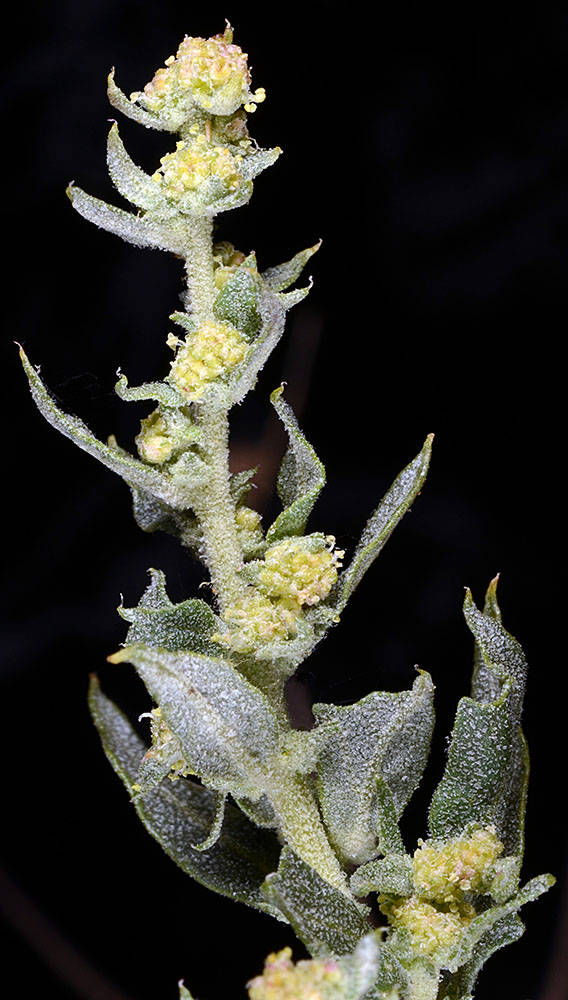Atriplex semibaccata
Atriplex rosea
red orache, tumbling orache
erect to ascending;
branches simple to much branched throughout, sometimes forming tumbleweeds.
alternate;
blades ovate to lanceolate; (1)1.5–6 × 1–3(3.5) cm, bases broadly cuneate to rounded, sometimes hastate on lower leaves;
margins wavy to coarsely dentate;
tips obtuse, farinose at least on lower surface;
petioles short to subsessile; (0)2–13 mm.
axillary few-flowered clusters and terminal spikes.
perianths 4–5-lobed.
perianths absent, enclosed by 2 bracteoles.
dimorphic; vertical, 1–2 mm; black; shiny or 2–2.5 mm, brown; dull.
fused to ~ halfway, rhombic to triangular rhombic, bases broadly cuneate to sometimes subhastate;
margins toothed in upper ?;
tips acute to obtuse;
faces smooth or short tuberculate, sessile or with stipe to 5 mm.
=18.
Atriplex semibaccata
Atriplex rosea
Disturbed areas, roadsides. Flowering Jul–Sep. 0–1500 m. BR, BW, Col, ECas, Est, Lava, Owy, WV. CA, ID, NV, WA; scattered throughout most of North America; Asia, Europe. Exotic.
Bridget Chipman
- Local floras:
BC,
CA,
OR,
WA
- Local Web sites:
CalFlora,
CalPhotos,
Flora NW,
PNW Herbaria
WildflowerSearch
iNaturalist (observations)
USDA Plants Database
- LBJ Wildflower Center
- SEINet
- Plants of the World Online
- Encyclopedia of Life
- Wikipedia
- Google Image Search



